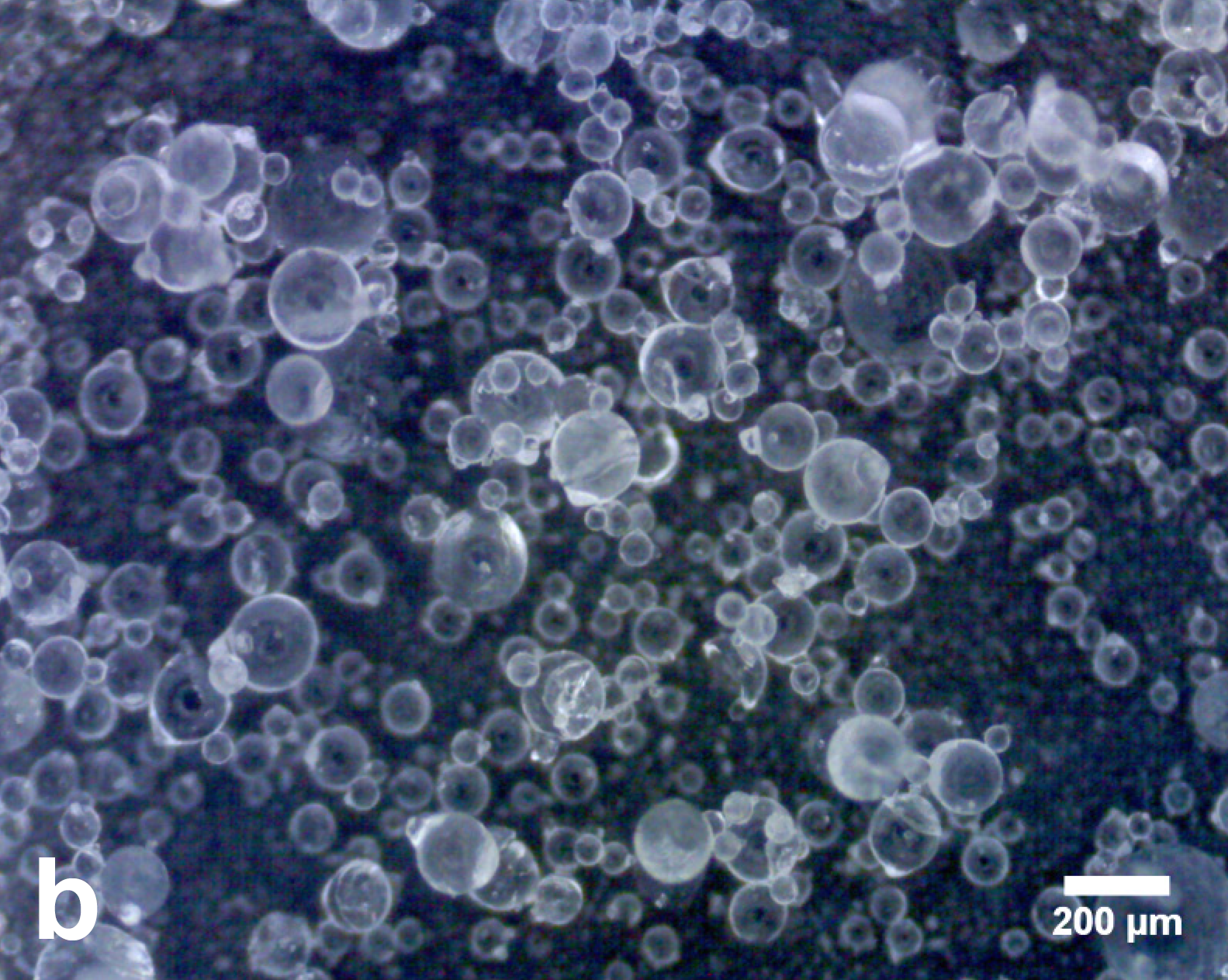Matter
- Name
- Water ice spherical particles 67±31 μm
- Family
- solid
- Database
- Experimentalists
- Origins
- laboratory
- Provider
- Cold Surfaces spectroscopy, Institut de Planétologie et Astrophysique de Grenoble (IPAG) Grenoble, France
- Provider reference code
- SPIPA-B
- Preparation
- raw
- Method
- Nebulization of liquid water and freezing by deposition in liquid nitrogen
- Phase type
- solid
- Shape
- granular powder
- Texture
- loose granular
- Type of porosity
- particulate
- Texture
- compact
- Grain sizes
-
Grains Size min Size max Size median Size width Size mass fraction Grain shape #1 30.0 40.0 0.03 spherical #2 40.0 50.0 0.21 spherical #3 50.0 60.0 0.31 spherical #4 60.0 70.0 0.13 spherical #5 70.0 80.0 0.11 spherical #6 80.0 90.0 0.06 spherical #7 90.0 100.0 0.02 spherical #8 100.0 110.0 0.02 spherical #9 110.0 120.0 0.05 spherical #10 120.0 130.0 0.01 spherical #11 130.0 140.0 0.0 spherical #12 140.0 150.0 0.01 spherical #13 150.0 160.0 0.01 spherical #14 160.0 170.0 0.01 spherical - Size method
- Manual counting on cryo-Scanning Electron Microscopy images of fresh ice particles
- Title
- Nebulization of liquid water droplets and freezing on a cold plate
- Matter
- Water ice spherical particles 67±31 μm (this matter)
- Processing steps
-
Step Date Type Process Changes #1 mechanical The liquid water is injected into a sonotrode and spread out as a thin film on the conical shaped nozzle surface at the output of the sonotrode. Ultrasonic vibrations delivered to the sonotrode nozzle disintegrate the liquid into micro-droplets. Spherical liquid water droplets are formed. #2 thermal The droplets of deionized/ultra-pure water, initially liquid, undergo solidification as they contact the liquid nitrogen Spherical water ice particles are formed.
